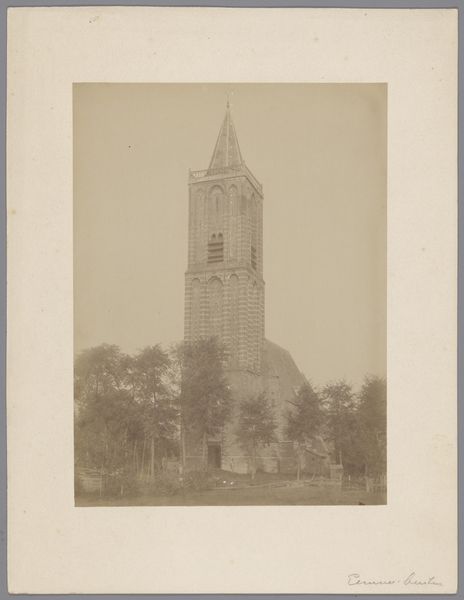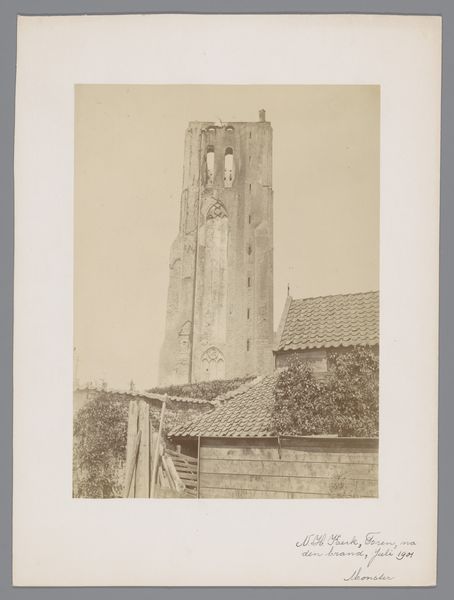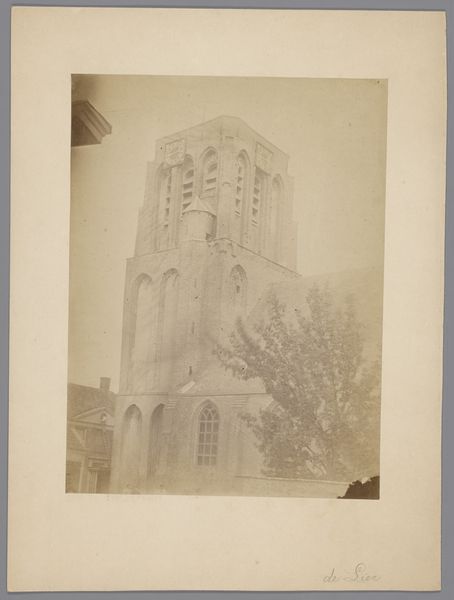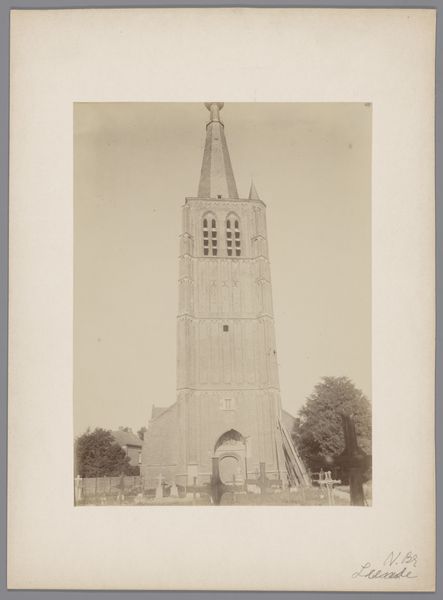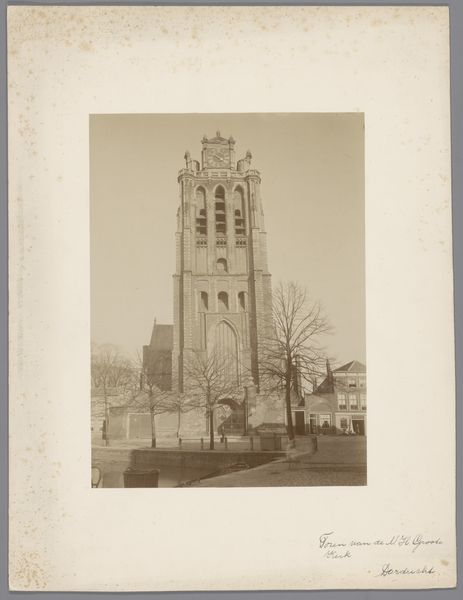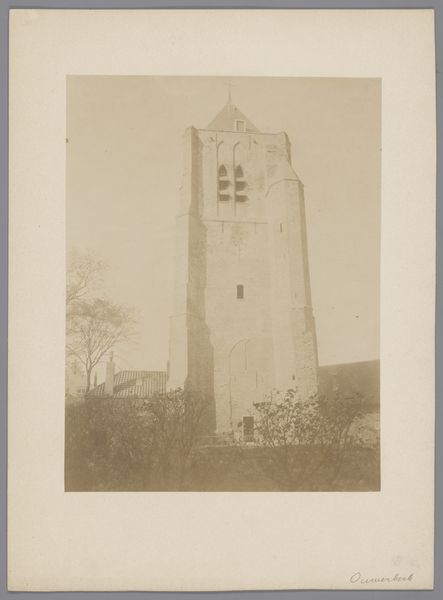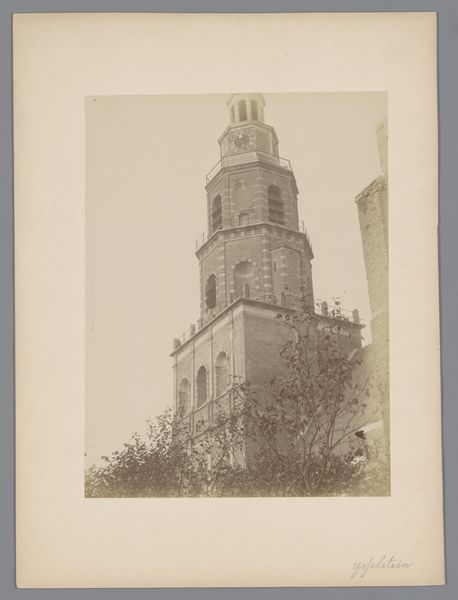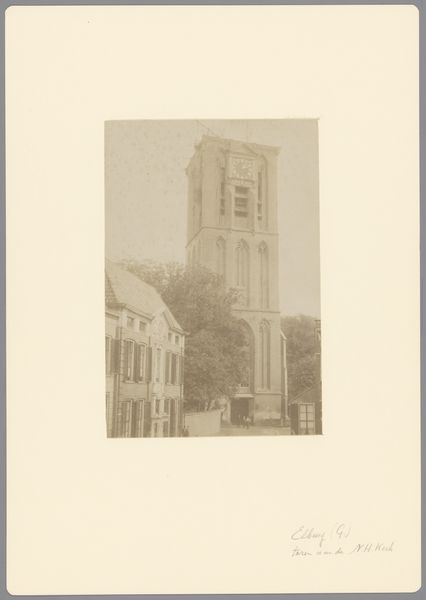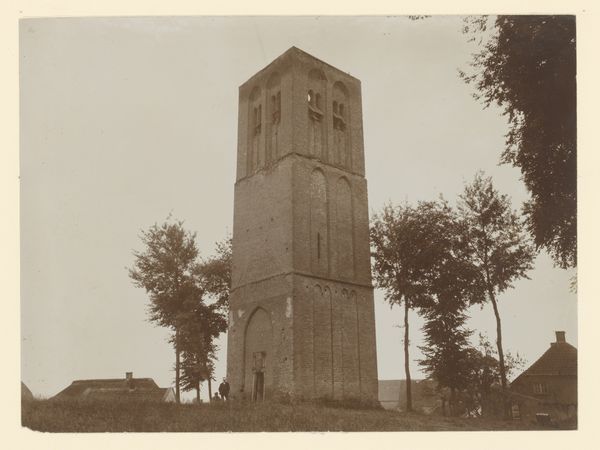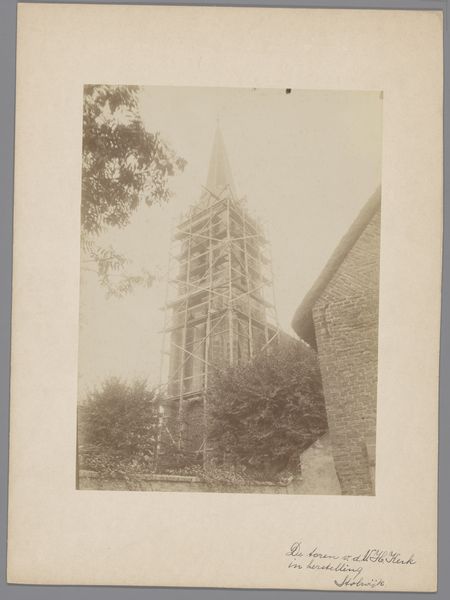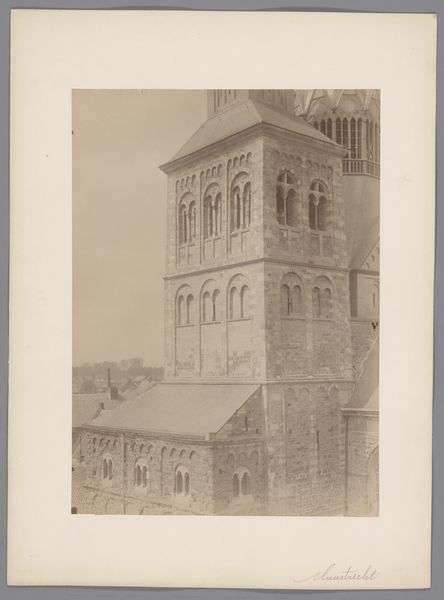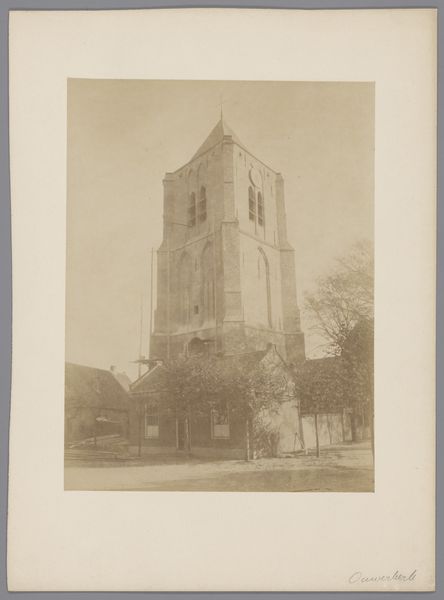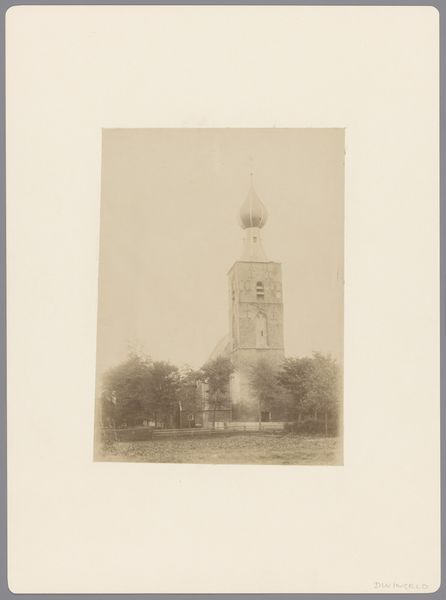
photography, gelatin-silver-print
#
aged paper
#
landscape
#
photography
#
romanesque
#
gelatin-silver-print
#
cityscape
Dimensions: height 280 mm, width 227 mm
Copyright: Rijks Museum: Open Domain
Curator: This is an early photograph by Johannes Gerardus Kramer, dating from around 1875 to 1900. It’s titled “Gezicht op de toren van de Grote Kerk te Elst,” which translates to "View of the tower of the Great Church in Elst." Editor: Wow, it's striking, isn't it? Something about the gelatin-silver print gives it this ghostly quality. The way the tower looms through the trees… almost feels like a forgotten memory rising up. Curator: Precisely! This photograph comes from a time of increased interest in documenting architectural heritage. The church tower becomes not just a building, but a symbol of the town's identity and history. Editor: You know, the framing is interesting. The foliage feels like it’s encroaching, softening what could be a very stern, geometric image. There's a sort of dance between nature and the built environment, as if the tower is slowly being reclaimed. Curator: I agree. It's worth considering that Elst has Roman roots and this great church dates back to Romanesque times. Kramer likely would have understood the socio-political role of architecture to represent power across time. The tower asserts dominance but the out-of-focus printing blurs this representation. Editor: I also think it brings up questions about photography itself as a recorder of history. On one hand, it's seemingly objective, but then you have the artist’s choices—the angle, the focus, the printing process—all subtly shaping how we see and interpret the scene. It’s not just capturing the building, it's framing it, in every sense of the word. Curator: Absolutely, photography in this era was still heavily influenced by painterly aesthetics. There's a deliberate romanticism here, perhaps even an idealization of the past. Editor: It almost feels like Kramer's trying to say something more, a kind of wistful reflection on time, the transience of things... even stone fades, you know? Curator: Yes. And how those sentiments change with new audiences. Thinking about how we view this piece today – filtered through more than a century of change and a different social context – is truly compelling. Editor: Definitely. It's amazing how much history can be packed into one "simple" photograph, isn’t it? Makes you wonder what future generations will make of our snapshots.
Comments
No comments
Be the first to comment and join the conversation on the ultimate creative platform.
